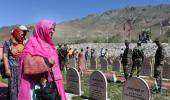'Never did we think that we will not win.'
'Success comes to those who dare and act, it seldom goes to the timid.'

Brigadier M P S Bajwa (retd), commander of the troops that captured Tiger Hill, tells Rediff.com's Archana Masih how a band of young soldiers won the Kargil War's most famous battle with their blood and grit.

We had to win back Tiger Hill and throw the Pakistani intruders out. There was no other way," says retired Brigadier M P S Bajwa, the brigade commander of the troops assigned to recapture the strategic feature during the Kargil War.
Indian soldiers fought fiercely at a height of 16,700 feet and won a difficult victory that was the turning point of the war in the summer of 1999.
"I salute my soldiers and the men who sacrificed their lives fighting on that hill," says the officer who arrived on the battleground 8 days before the assault on the objective.
"When I reached, I wanted to see Tiger Hill. I had a look and said 'I have to capture this' -- that was the foremost thing for a commander before formulating a plan."
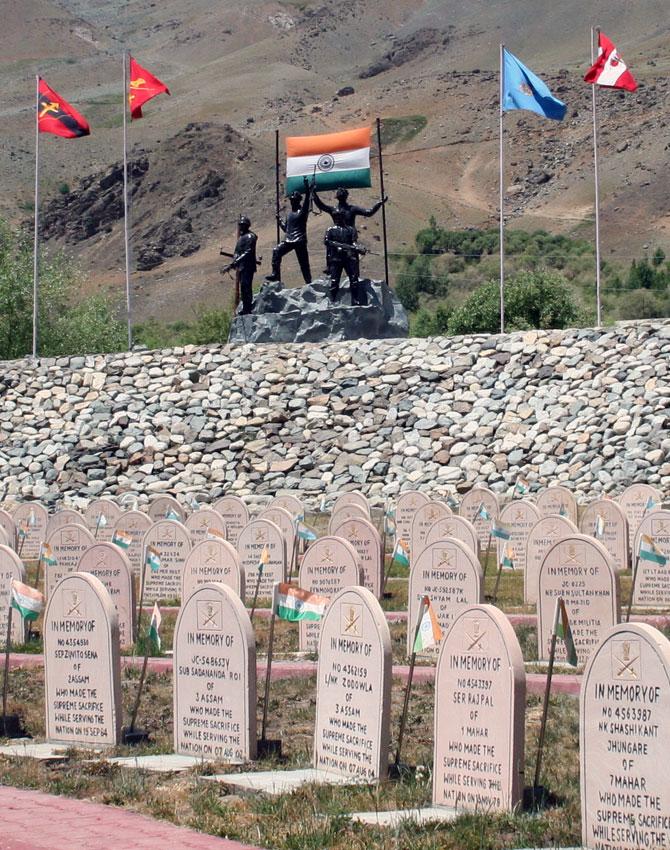
Pakistani soldiers along with mercenaries had captured strategic posts in the mountains of Kargil district in Jammu and Kashmir. From those dominating heights, they shelled and attacked Indian positions.
The Indian Army, assisted by the Indian Air Force, fought many fierce battles between May and July 1999 to win back Indian territory occupied by Pakistan.
Peak by peak, hill by hill, post by post, inch by inch, brave young Indian soldiers fought courageously in freezing temperatures on steep mountains till the well-entrenched enemy was evicted.
Tiger Hill was the focal point from where Pakistanis launched intense and direct fire at the sole highway connecting Srinagar to Leh. Their plan was to choke the Indian vehicular supply route.
Winning back Tiger Hill was going to be a difficult mission.
The sharp conical features of the hill stood majestically among the mountain tops, wrote then army chief General Ved Prakash Malik.
'During the Kargil war, it was a delight for photojournalists as it provided some of the best pictures of that war. Tiger Hill was picturesque, dominating and difficult, and soon became a war symbol to every one in India!' noted General Malik in his account of the battle of Tiger Hill.
"We couldn't pass through National Highway 1A. It was being shelled heavily, we had to cross vehicle by vehicle. They had mortars (guns launchings explosive shells) positioned on Tiger Hill and their medium artillery was firing continuously," remembers Brigadier Bajwa.
On the road, he saw vehicles on fire.
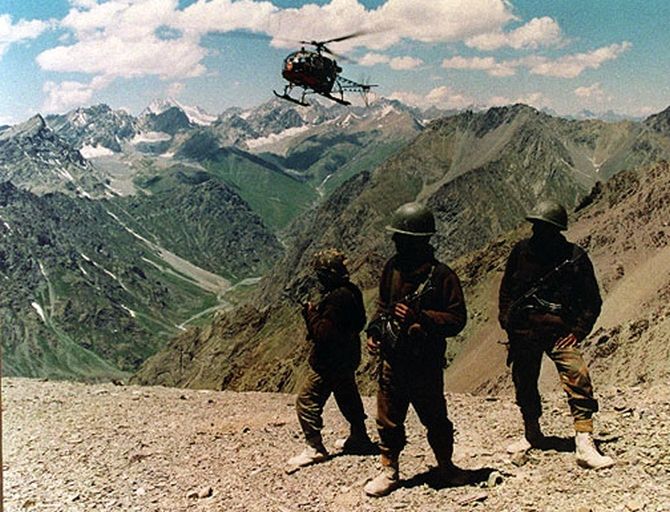
A veteran of the 1971 war, Brigadier Bajwa was deployed in north Kashmir in counter insurgency operations and was summoned for the mission of Tiger Hill.
The day after he reached, as he was surveying the battle zone, an artillery shell exploded nearby, burying him into the ground. He luckily escaped with some blunt injuries and a couple of stitches.
Just the previous year, he had been wounded in an IED explosion in J&K which left him with 48 stitches; the two stitches seemed like a minor scratch.
"They treated me and I carried on with a light limp. Our only aim was to fight and take Tiger Hill for the nation."
The battle plan was executed by soldiers of the 18 Grenadiers and 8 Sikh battalions.
Troops from 18 Grenadiers had just come from fighting in Tololing Hill, another tough battle that was won after three weeks of bitter fighting and heavy losses of Indian soldiers.
The Grenadiers lost 25 men in Tololing, including the unit's second senior-most officer Lieutenant Colonel Ramakrishnan Vishwanathan, who was awarded a Vir Chakra posthumously.
"18 Grenadiers had many casualties and wounded in the Battle for Tololing. They were down to around 60 men," says Brigadier Bajwa.

The other battalion tasked for the operation was 8 Sikh that was already deployed around the Tiger Hill area. The unit had lost 25 men in a previous attempt to close in on Tiger Hill, but had battled on against the odds and had isolated the feature from three sides.
"When I told my men about the plan, we knew it was a bold and difficult plan, but this was the only plan that could succeed and I was very sure we will."
A ghatak (commando) platoon of 30 led by young Lieutenant Balwan Singh, just three months into service, climbed up the steep mountain from the most difficult approach in order to take the enemy by surprise.
It took the men two nights and day reach the top. They were assisted by a team from the High Altitude Warfare School.
As the Grenadiers stealthily inched up the vertical cliff on the north-eastern side, Bofors guns positioned below launched direct fire at enemy positions on Tiger Hill.
Meanwhile, 8 Sikh engaged the enemy on the western spur, led by two young officers, Lieutenant R K Shehrawat and Major Ravinder Singh.
The IAF also conducted bombings on the feature for two days to deplete the enemy's defences.

"The commando unit of 18 Grenadiers kept their word. At 4 am on July 4, they captured the top," recalls Brigadier Bajwa.
Lieutenant Balwan Singh, now a colonel, was awarded the Mahavir Chakra for bravery.
Grenadier Yoginder Yadav, just 19, crawled back after the mission with 6 bullets inside his body. He is among the two living Param Vir Chakra awardees of the Kargil War.
"At 4.30 am, I messaged GOC Lieutenant General Mohinder Puri that the mission had been accomplished," says Brigadier Bajwa.
"He was so excited. I told him not to tell anyone as we were still fighting, but the news trickled and reached the prime minister in no time."
"By 9 am, Prime Minister (Atal Bihari) Vajpayee announced at a public meeting in Haryana that Tiger Hill had been captured."
The timing was crucial because on that day -- July 4 -- then Pakistan prime minister Nawaz Sharif was scheduled to meet then American President Bill Clinton.
"This victory of my Tiger Hill prompted Clinton to tell Sharif to pull his troops out," says Brigadier Bajwa.
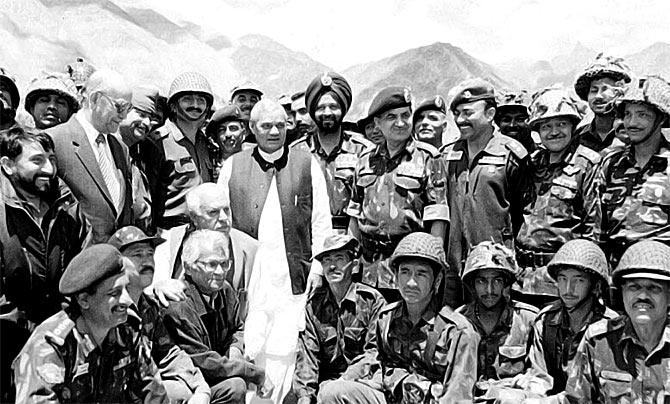
The Grenadiers had captured the top, but the battle was far from over.
The Pakistanis launched three waves of counter attacks that was repelled by 52 soldiers from 8 Sikh.
"There ensued a fierce fight and we held on. In the meantime, the men of 8 Sikh (2 officers, 4 Junior Commissioned Officers and 46 other ranks) fought hard from the south western side."
The Grenadiers suffered six fatalities in the battle.
8 Sikh lost one officer, three JCOs and 30 jawans in the capture of Tiger Hill, according to the Army Directorate of General Information.
For 48 hours, 8 Sikh and the Grenadiers clung to the top. The soldiers fought till the fierce counter attacks had been beaten down.
The Pakistani counter attack was led by an officer of the Northern Light Infantry, adept at fighting at that high terrain.
"It was the first instance of a Pakistani officer leading their counter attack. The officer's name was Captain Karnal Sher Khan. He died after a brave fight and I recognised his valour. A brave soldier should get his due," says Brigadier Bajwa.
The Pakistan army first refused, but later accepted Captain Khan's body. Before his remains were sent across the border, Brigadier Bajwa placed a letter in Captain Khan's pocket mentioning that his valour should be recognised by his country.
The letter served its purpose and the soldier was awarded the Nishan-e-Haider, Pakistan's highest gallantry award.
Since the Pakistan army maintained that the intruders were mujahideen and denied it had sent in its own troops, they refused to take back the bodies of their soldiers.
"We buried 30, 40 bodies on the ridgeline itself. Captain Khan's body was brought down especially and sent to Delhi from where it was handed over to Pakistan."
"Inspiration and leadership is one thing we always score over the Pakistan army," says the brigadier.
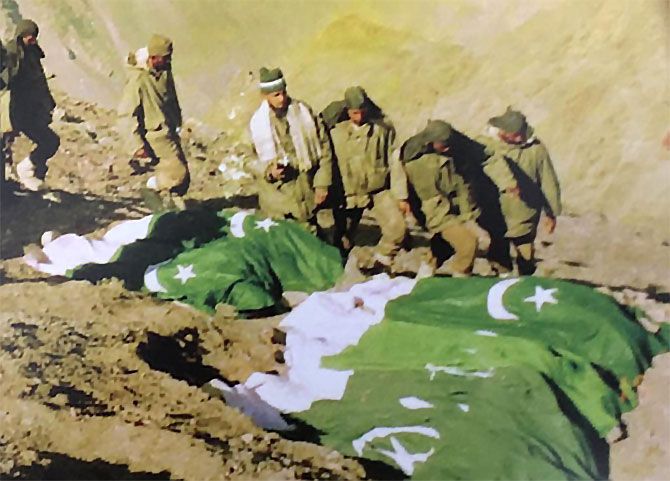
Now 71, Brigadier Bajwa retired from the Indian Army in 2004, but remembers the Battle of Tiger Hill as if he were still in the thick of the war.
He remembers the names of the soldiers, the strength of the companies, the rain that previous night, the conversation on the radio sets with the men, the joy of victory and the sadness of seeing the bodies of men who died in the battle.
"It was a hard-won battle. I salute my troops who fought and those who gave their lives. I salute their parents and those who were wounded," says Brigadier Bajwa.
"The next day, our boys captured Peak 4875 where we lost Captain Vikram Batra."
Captain Batra was awarded the Param Vir Chakra and came to epitomise the face of the Indian soldier in the Kargil War. His role has been essayed in several Hindi films and a biopic is on the anvil.
The Kargil War was fought and won by young officers and men, mostly in the 20s, who left behind shining examples of valour that India must never forget.
"We built lasting bonds because we fought that battle together. I was their commander and I will always remember my troops," says Brigadier Bajwa.
The commanding officer of 18 Grenadiers, Colonel Kushal Thakur, retired as a brigadier in 2010. Brigadier Bajwa will meet him on July 26 to commemorate Operation Vijay.
Major Ravinder Singh and Lieutenant R K Shehrawat, the two officers who led 8 Sikh into battle, were wounded. "I am still in touch with them," says Brigadier Bajwa.
The commanding officer of 8 Sikh, Colonel S P Singh, unfortunately passed away after the war just before the unit moved out of Kargil.
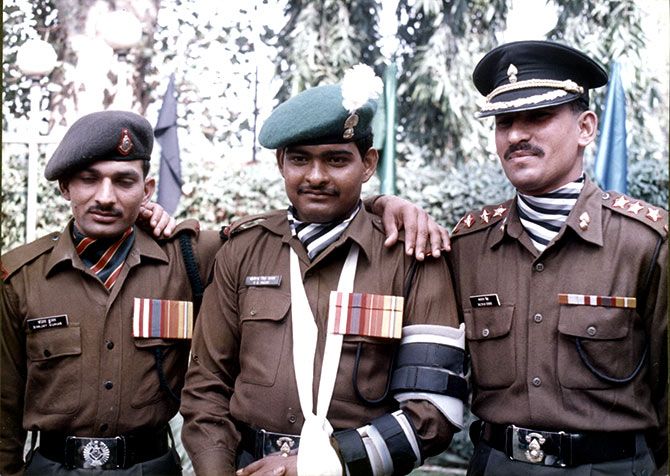
Grenadier Yadav and Lieutenant Balwan Singh were in the commando platoon that led the final assault on Tiger Hill.
Their bravery that night is the stuff of legend. Photograph: Rediff.com.
After the Indian flag was firmly installed on Tiger Hill, Brigadier Bajwa was given the objective of capturing Zulu top. The task was accomplished by soldiers of 3/3 Gorkha Rifles and a team of 9 Para (Special Forces).
The men fought Pakistani troops from the 8 Baloch regiment. Indian soldiers evicted the enemy and also captured the first Pakistani prisoner of war.
When the PoW was brought to Brigadier Bajwa, he spoke to him in Punjabi.
"He started weeping and said, 'Sir, they had told me that the Indians will poison and kill you if I was captured, but what I am seeing is different'," remembers Brigadier Bajwa.
The PoW, he says, was treated for his wounds and evacuated.
"On July 29, Colonel Mustafa of Pakistan's Frontier Force Regiment called me on the telephone and requested the dead bodies of their men. I asked him what will you do for me in return?" recalls Brigadier Bajwa.
"I told them to take the bodies with respect and go back. He said, 'Sir we will go back', and I asked, 'How do I believe you?' He replied, 'Sir, I'm a pathan'."
"We returned 7, 8 bodies; and the Baloch troops retreated," remembers Brigadier Bajwa.

The capture of Zulu Top on July 25 was the last operation by the Indian Army in the Kargil War before victory was officially declared.
Major Sudhir Walia of 9 Para, who led his team that captured the crucial objective, was martyred a month after the Kargil War ended while fighting terrorists in J&K.
He was honoured with the Ashok Chakra, the highest medal for gallantry in peacetime.
His schoolmate Captain Sanjeev Jamwal won the Vir Chakra for the capture of Peak 5140 in the Kargil War and is now a colonel in the army.
Two other young officers from the Kangra region of Himachal Pradesh -- where Major Walia hailed from -- were martyred in the war -- Captain Vikram Batra and Captain Saurabh Kalia.
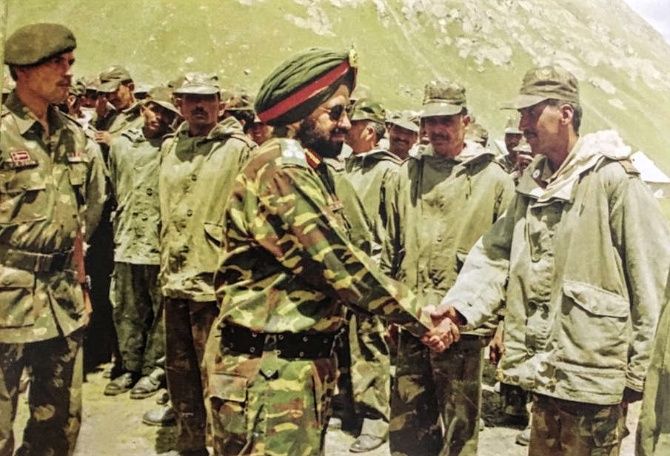
527 Indian soldiers sacrificed their lives by the end of the Kargil War. They won back each post with blood, grit and raw courage. The peaks, ridges, cliffs and valleys bearing witness to what brave young Indian soldiers accomplished in that summer of 1999.
"We never thought that we will not win," says Brigadier Bajwa.
"Success comes to those who dare and act, it seldom goes to the timid."

